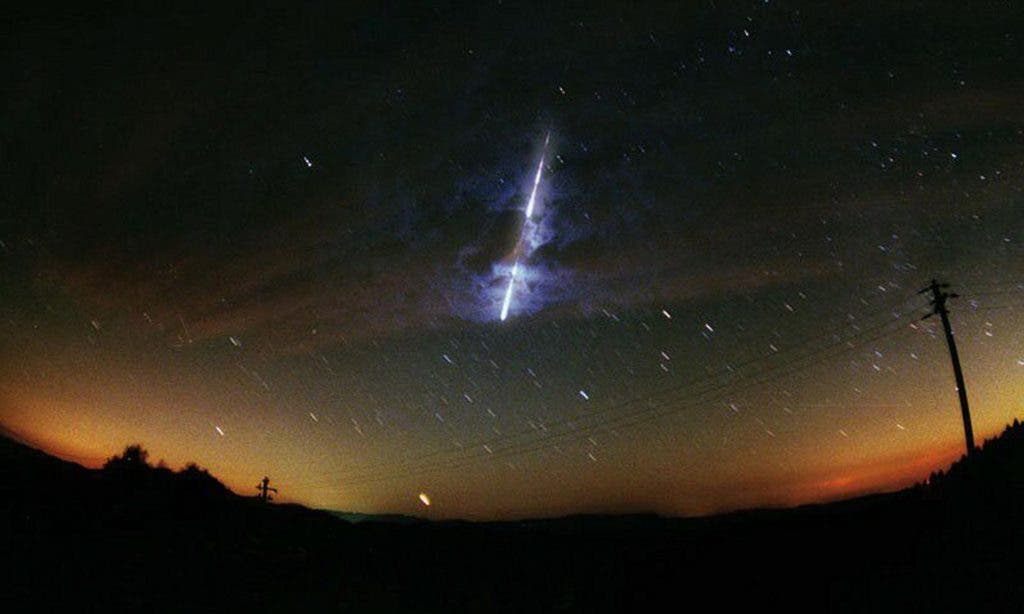Geoscience Australia confirmed that the tremor which shook Gladstone last night has been caused by a meteor, not an earthquake.

A Nasa image showing a meteor streaking across the sky in the United States.
Image credits NASA / EPA.
Queensland residents have reported bright lights and a loud booming noise in the night sky on Monday. Local radio stations and police have received numerous phone calls from locals reporting a fireball in the sky and tremors, but so far no damage or victims have been reported.
A spokesperson for Geosciences Australia confirmed today that a tremor had been recorded around Gladstone, Central Queensland, around 8:30pm on Monday night but that it wasn’t caused by an earthquake. Harvard astrophysicist Johnathan Powell told the Gladstone Observer that it all “sounds like a big [meteor], first in several years that has been that big.”
“I’m guessing about a rock about a metre across which would have been big enough perhaps to leave fragments,” he added.
Catching pebbles
Here’s a thought to keep you up at night: meteorites hit the Earth all the time. The Universe is chock full of particles zipping about, and planets are really good at catching them. Just look at Mars’ or the Moon’s surface and you’ll see records of these events captured as craters — lots and lots of craters. Thankfully, we have a hefty atmosphere to burn up space rocks before impact, so technically most of these bodies are classified as meteoroids because they don’t collide with the surface.
Estimates for how many fall on Earth vary quite a lot, though, depending on size and because estimates are intrinsically plagued by assumption errors. Studies found that anywhere between 37,000-78,000 tons of material falls on our planet each year. Most of this matter comes in the dust-sized variety, and really is harmless.
“The Earth gets hit by 100 tonnes of meteorite activity every day. While you are and I are driving around doing our shopping, going outside, socialising, we’re getting hit by debris,” said Astro Space News editor and publisher Dave Reneke.
But a small part of this total does fall on Earth; a 1996 study (P.A. Bland et al, Geosciences) found that averaged over the last 50.000 years, 900-7300 kilograms of matter in the 10 gram to 1 kilogram range (0.02 to 2.20 pounds), hits the ground every year.
Yesterday night, one such daring rock made a bee-line for Queensland’s coast, putting on quite a display. People took to social media to describe loud “bangs”, and a “bright flash” lighting up the the sky as houses “shook.”
https://twitter.com/JonathanHair/status/780587311109054465
“[It] looked like a big as hell shooting star and lit up the beach then about a minute later a big bang and a shockwave came over the water and shook my car little bit was a pritty (sic) awesome experience,” posted Boyne beach local Jacques Reimers on the Higgins Storm Chasing Facebook page.
The Higgins Storm Chasing group said the meteorite most likely hit somewhere offshore as there have been no reports of damage on land as of yet. A 3.8 magnitude earthquake struck off the coast of Airlie Beach at around 10.15pm, though there is nothing to suggest it was as a result of the apparent meteor strike.









